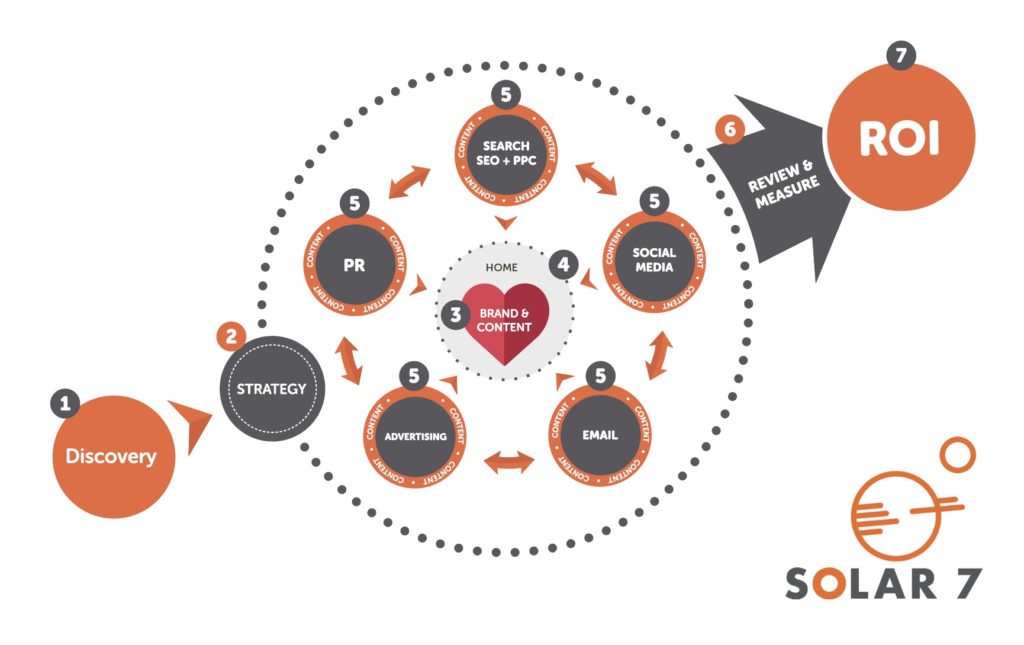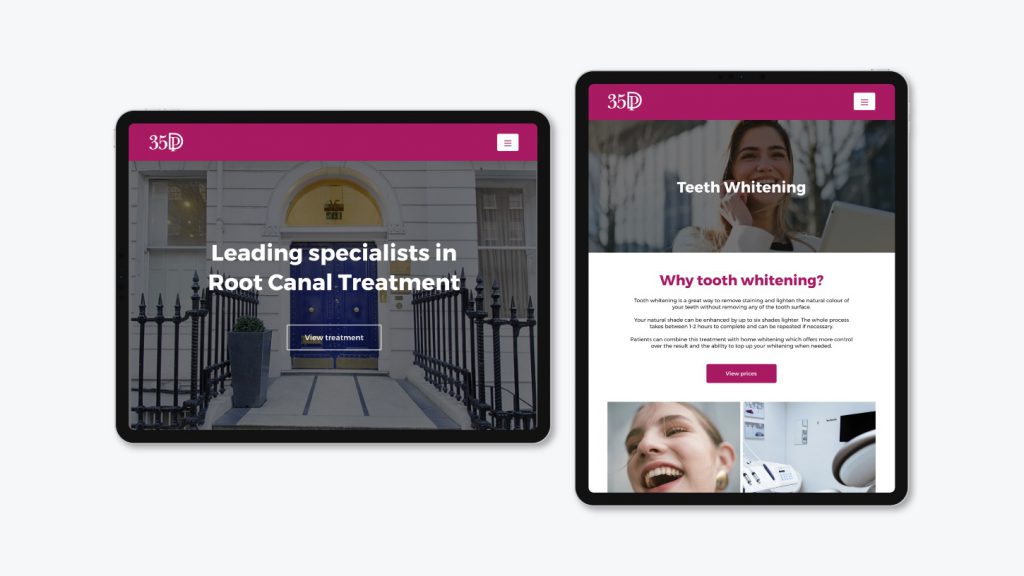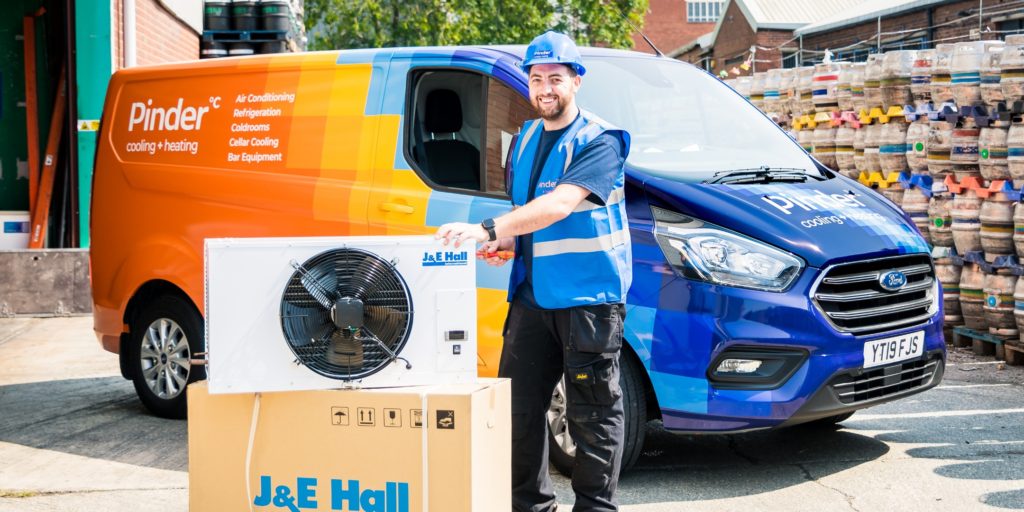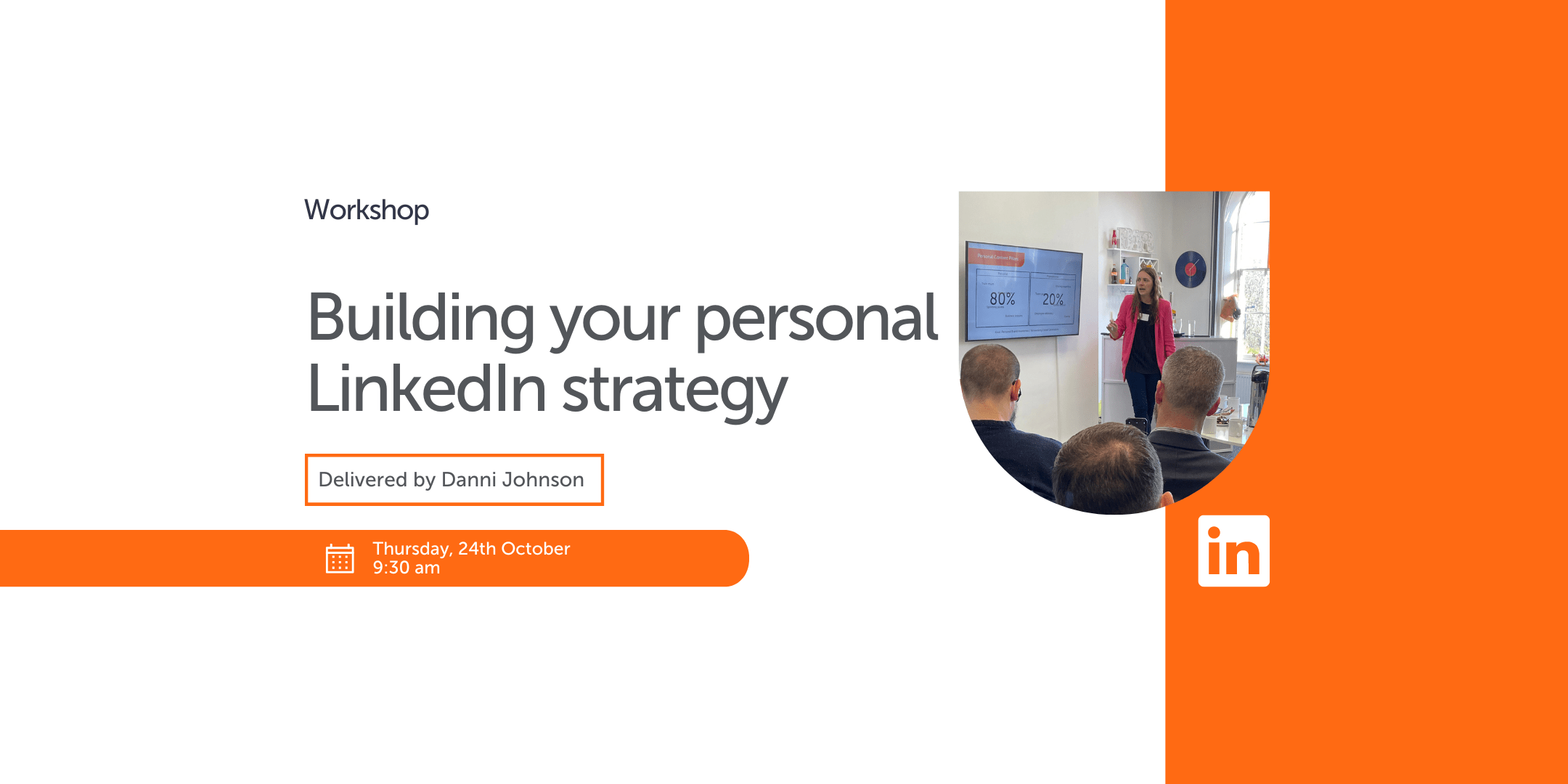On Thursday 15th December we held our second 80×20 networking event.
With mince pies and festive jumpers galore, it was a fun event full of networking, laughter, learning and festive cheer.
Why 80×20?
As a business owner or marketing manager, your time is precious, we get it. That’s why we combined networking and learning, all in the same calendar slot. 40 minutes of networking, followed by a 20-minute learning session, followed by another 40 minutes of networking.
A total of 80 minutes of networking and 20 minutes of learning.
In December we covered…
In December’s ‘20 minute mastery’ the subject was – How to approach your marketing the right way.
The aim of the session was to help you understand how to approach your marketing more strategically, to allow your business to cut through the noise in your industry. As well as achieve your marketing and revenue goals.
Our Director, and marketing specialist, Jag, talked the attendees through our proven stage-by-stage SOLAR 7 marketing methodology. We’ve used this 7-stage system over the last 15+ years to deliver great results for our clients, so we know it works.
The goal of the session was to demystify digital marketing. Below are the video and slides from the session, also a breakdown of what was covered.
Video
Slides
Common questions we get asked
As an agency we often get plenty of questions from business owners about digital marketing, these include:
- There are so many marketing methods, we don’t know which one is right for us?
- We don’t know what’s working and what isn’t?
- We just want results!
Many of these questions are valid, and sure enough if you’re running any kind of marketing it’s normal to ‘just want results’. The last thing you want to do as a business owner is spend all your time trying to figure out whether your marketing is working or not.
Marketing and the universe
Marketing is a bit like our universe, there’s a lot we know already about the solar system.
We can predict the next time there will be a solar eclipse, we know the next time Halley’s Comet will come around, we know how many times we can go around the Sun, we know how many times the Moon is going to rotate around the Earth. We know all this activity, but outside the solar system, there’s very little we know, and we continue to learn.
Digital marketing is very similar to this.
Order from chaos
Over the last 15 years, we’ve developed a marketing process called the SOLAR 7. All marketing activities we undertake for our clients fit into this model. And yes, it looks very similar to the solar system, hence the name.

Having worked with numerous clients over the last 15+ years, we’ve developed this process as it allows us to bring order to the chaos that is digital marketing. It allows our clients, and hopefully now you, to see how best to approach your marketing.
It gives a clear stage-by-stage framework that can be applied to your business to gain marketing results in a more strategic way. So no longer are you left wondering what you need to do next, it’s all there, in the model.
So let’s go through each stage.
Stage 1- Discovery
The first stage is Discovery, it’s all about where you’ve been as an organisation, where you are now, and where you want to go.
It’s a chance for you and key team members to sit down and take the time to fully understand every facet of your business.
Some things you can discuss during this session:
- Past marketing activity and results achieved (this includes networking events, your personal brand on social media and word of mouth marketing too!)
- Current marketing and results achieved
- Where you want to be in 12-24 months
- Who your customers are – define the type of people you want to work with.
- Who your competitors are
SWOT analysis
The next thing to do is to carry out a SWOT analysis. This is a simple list of your strengths, weaknesses, opportunities and threats. When doing this analysis, it’s important to understand that the strengths and weaknesses are factors internal to the business, however the opportunities and threats are factors external to the business.
The internal things are largely under your control, however the external things are out of your control, but it’s good to be aware of them to see how they might affect your marketing activity.
Hurdles encountered
Like anything, there are a few hurdles you may encounter when working through stage 1, these include;
- People not being honest with themselves. About their strengths and weaknesses.
- Not making the connection. Once identified, strengths and weaknesses need to be taken advantage of, once you make the connection, use it to get results.
- With strengths, focus on the value offered rather than the features.
SMART goals
When looking at what you want to achieve in the next 12-24 months during the discovery stage, put your goals and objectives through the SMART filter. Smart stands for Specific, Measurable, Achievable, Realistic and Timed.
- Specific: Make sure your objectives are specific, this means real numbers with real deadlines.
- Measurable: Make sure your objectives are measurable, this means they are trackable.
- Achievable: Make sure your objectives are achievable, this means they are challenging but not impossible.
- Realistic: Make sure your objectives are realistic, this is where you need to be honest about what your business and team are capable of.
- Timed: Make sure your objectives are timed, give yourself a deadline, and stick to it.
Hurdles encountered
Some common mistakes people make when setting SMART goals are:
- People not being tough on themselves, and setting the bar too low. Be realistic but also stretch yourself. Set the bar high so that even if you don’t achieve it you’re still exceeding targets.
- Not thinking about objectives thoroughly enough. Think through your goals and don’t be delusional. If you’re only making £50,000 per year this year then don’t set a goal to make £1,000,000 next year as this will be very difficult to achieve. Look at where you are and also the resources and time you have available, set the goals accordingly.
- Not keeping objectives in clear sight. It’s easy to set objectives in January, but often if you ask teams further into the year what their objectives are, most people wouldn’t be able to tell you. Make sure that any objectives you set at the start of the year are kept top of mind throughout the year.
Case study – 35 Devonshire Place

A few years ago we worked with a client, they were a dental practice on Harley Street. As the owners were all dentists and had little marketing knowledge, they required help with their marketing.
The issue:
We went to London and had a discovery session with the directors. We looked at each part of their business and interestingly each director was giving us different answers to the questions we asked.
A perfect example of when teams are not on the same page!
The solution:
We asked the necessary questions, and ironed out all the discrepancies to help the management team gain a cohesive understanding of their business and marketing.
Stage 2- Strategy
The strategy captures all the marketing activity that needs to take place in order to achieve your goals. The things you need to be looking at as part of the strategy include (but not limited to):
- Customer research
- Competitor research
- Gaps between yours and your competitors’ marketing:
- What marketing do they do?
- What is their social media like?
- Where do they rank on Google?
- What gaps can you see between your competitors and your marketing?
The outcome from a strategy would be a detailed document outlining the critical and non-critical activities required to be completed, and when. It’s a roadmap that your team can follow and gain feedback from throughout the year.
No business operates in a vacuum environment, there’s always something external that can impact your business. For this reason it’s important to fully expect this strategy to change over time. However, having a plan in place can give you a general direction to take your marketing.
Hurdles encountered
Some common mistakes people make during the strategy stage:
- Creating a strategy that has no action points or too many action points. Taking action is important, there’s no point creating a plan with no execution behind it. However, too many action points can become overwhelming, so choose what works for your business (in line with the resources you have).
- Make it manageable. Have 3 core priorities in 3 months, don’t overload your team with too many objectives.
Stage 3- Brand and content
Brand and content are at the heart of your marketing strategy. Your brand dictates how people perceive your business and content is key to the message you communicate to your target audience.
Your brand is so much more than just your logo, it’s the feeling people get when they interact with your brand. It’s what they read, it’s how it makes them feel, it’s about the positioning.
All these things contribute to your brand and content.
Case study – Pinder Cooling
Pinder Cooling is an air conditioning company in Yorkshire. When they initially approached us, their branding looked like this:
What does that communicate to you? To us this logo looks more like an American football team logo than a logo for an air conditioning company.
Pinder Cooling initially approached us to take over their SEO and online paid advertising for them. We had a discussion about their brand and made them aware that with the right branding, we could generate so many more leads for them.
This resulted in a complete rebrand, not only visually but also around their key messaging, core values, tone of voice and any other communication on their social channels and website.
You can see the end result below, and I’m sure you’ll agree it’s much more aligned with their business.


Hurdles encountered
Some common mistakes people make during this stage are:
- Not focussing on brand voice. We all have a voice, we all speak and communicate in a certain way. Likewise, your brand has its own personality and voice. This is what forms the basis of the tone of voice and is an important step to get your brand and content aligned. This tone of voice needs to speak directly to your target audience.
- Not knowing your audience or competition well enough. We’ve already covered this point many times in this blog, it’s that important.
- Not being consistent across all platforms with your brand. This is key. The number of times we see businesses with different variations of their logo on different platforms is painful to see! Not only does this hurt the trust a prospect will have for your brand, it can also come across as unprofessional.
Stage 4- Website
This is like the sun in the SOLAR 7 marketing system. It’s the central hub where you drive all your prospects and customers to, most likely just before they make an inquiry. Your website is a platform to execute your call to actions (the actions you want your audience to take).
With Pinder Cooling, we also created a new website,which resulted in prospects enquiring due to the professional look and content of the website, before we even started any marketing for them.
Hurdles encountered
Some common mistakes people make during this stage are:
- When a website isn’t created to generate enquiries or deliver the key call to action for the client. The purpose of a website isn’t just to look pretty. Careful thought should go into how the website will generate enquiries and what needs to be incorporated in the design to deliver that.
- When there is no balance between the content and design. Sometimes you may come across the best designed website but if it doesn’t communicate the right message through content, then it won’t deliver the results you’re after for your business.
- Thinking everyone has your user habits. It’s easy to assume that how you interact with a website is the same way for everyone else. This is not the case. There are 3 types of content consumers, skimmers, swimmers and divers. Skimmers generally glance over the content, divers are the people who read every last detail, and swimmers are the people in between. Make sure any content on your website speaks to all 3 of these people.
Stage 5- Marketing channels
These are what we call the ‘planets’ in the SOLAR 7 model. They are different ways to generate traffic to your website. The marketing channels include (but are not limited to) Search Engine Optimisation (SEO), Pay Per Click Advertising (PPC), Social Media Marketing (SMM), Public Relations (PR), Email Marketing and Advertising.
On average in a day you see between 3,000 and 25,000 marketing messages, just look around you, you’ll see branding and marketing everywhere. And on average it takes more than 7 touchpoints with a prospect before they decide to make an inquiry with you.
This is why you need to make sure you are present on as many marketing channels as possible that are relevant to your target audience.
Content complements each marketing channel as it’s at the heart of the SOLAR 7 model. It’s important that any content you put out on these channels aligns with your brand message and resonates with your target audience.
The marketing channels we used for Pinder Cooling were PR, SEO, PPC, Social Media and Email Marketing. This resulted in £290,000 of quotes sent in 2021, generated directly from our marketing activity.
Hurdles encountered
Some common mistakes people make during this stage are:
- Expectations are too high. Remember, overnight success doesn’t exist, no matter what anyone tells you. It’s the slow and steady progress you make that will deliver results. Especially with marketing, it takes time to put all the right marketing activity in place. But if done right, it can deliver great results.
- Know the difference between brand building and direct action mechanisms. Brand building is done through long term use of the marketing channels to get your name out there. Direct action mechanisms are using the channels to generate an immediate action, these are things like PPC and social media advertising. You must utilise both to get effective results.
- Focussing too much on vanity figures. These are things like impressions, reach, followers that are not your target audience. Make sure to establish what the key metrics are that move your business forward and only focus on those.
- Not using enough channels to complement each other. You can’t just be on one channel and expect great results. You can start off with one but then should move across as many channels where your target audience would be, as resources allow.
Stage 6- Review and Measure
Now that you’re conducting all this marketing activity, how do you know if it’s working for you? This is where reviewing and measuring come into play.
Going back to one of our clients we mentioned earlier, 35 Devonshire Place. We started doing PPC for them, with the website they had at the time.
Initially, they weren’t getting any enquiries through, even though we were generating a large volume of traffic to their website. As we hadn’t built the website, we had to analyse and brainstorm to work out where the blockage was.
We identified that even though we were running Google Ads for them, the website page the traffic was going to was not optimised for conversions. It didn’t give the prospect the information they needed, so most of the traffic was leaving when they got there.
We suggested creating a dedicated landing page for the traffic to go to, which had the right anatomy and was optimised for the type of ads we were running for them. This resulted in more conversions for the client.
This is a perfect example to show why reviewing and measuring your marketing activity is important as it prevents you from wasting money on things that aren’t working.
Hurdles encountered
Some common mistakes people make during this stage are:
- Not measuring the right Key Performance Indicators. Make sure you are measuring the right things, these are things that move your business forward.
- Inconsistent measurement. Keep track of your objectives regularly. Set a time each month to have a look at all your metrics, this allows you to identify any trends and work out what’s working and what isn’t.
- Not measuring at all. This one is self explanatory!
Stage 7- Return on Investment (ROI)
This is the final stage of the SOLAR 7 model, and allows you to quantify your results.
One thing to note is that marketing isn’t an emergency service, it’s not a band aid. It should be something you do on a regular basis. This is where you get the best results.
Essentially, like anything, consistency is where the real results happen. So it’s not just a case of throwing money at the platforms and expecting an immediate return on your investment
Carrying out regular marketing activity, over time, will allow you to build your brand presence and trust with your prospects, who when making the buying decision, will most likely have your business top of mind.
Now you know the right, stage-by-stage process to approach your marketing, go forth and build your brand!
If you would like more information on our SOLAR 7 methodology, why not get in touch to speak to an expert.


